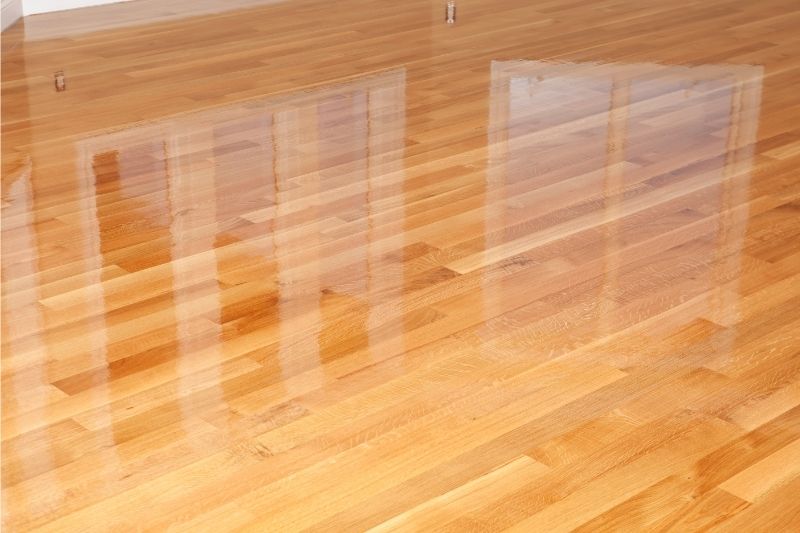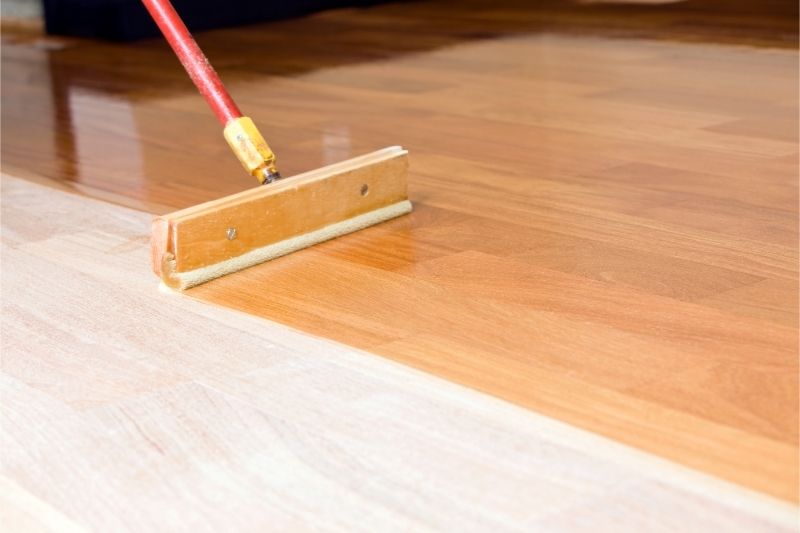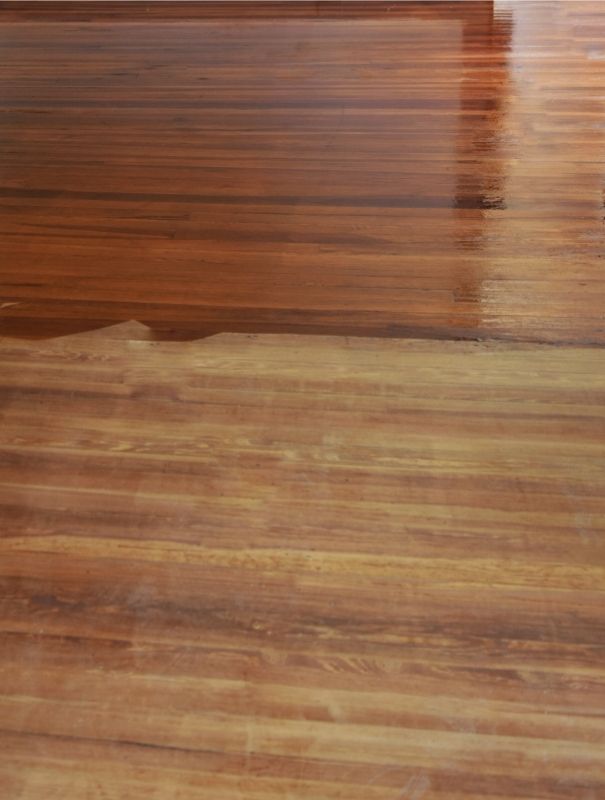Polyurethane is a common finish that people use to protect their hardwood floors. It can also help make the wood look shiny and new. But how many coats of polyurethane for hardwood floors is just right? This blog post discusses two different types of poly, and how many coatings you should apply for each to get the best result.
Types of Polyurethane Floor Finishes
There are two types of polyurethane that people can use on hardwood floors: water-based and oil-based.

Water-based polyurethane
Water-based polyurethane is a type of clear finish that provides a protective coating for wood. It’s easy to apply, and it dries quickly. It can be used on raw or finished wood surfaces, such as furniture, floors, doors and cabinets.
Unlike oil-based finishes which are more difficult to clean up after application, water-based poly is easier to clean off your hands when you’re done applying the product.
Oil-based polyurethane
Compared to water-based polyurethane, oil-based poly is more durable and can resist water, stains or scratches. But it’s also harder to work with because the smell is stronger and you’ll need to wear a mask for protection during application. Clean up is a bit tougher too as oil-based polyurethanes are difficult to clean off your hands once they’re dry.
Oil-based polyurethane is best suited for high traffic areas where durability matters most like staircases, hallways, kitchens and living rooms–places that see lots of wear from people walking on them day after day.
How Many Coats of Polyurethane for Hardwood Floors?
The best way to decide how many coats of polyurethane your hardwood floor needs would depend on what type you’re using, whether it’s water-based or oil-based, and the overall condition of the wood as well as other factors like traffic in high use areas.

When applying water-based polyurethane on hardwood floors, you’ll need to apply a minimum of three coats; more will be needed if the floors are very old. Water-borne poly is thinner than its oil-based counterpart, which also means it will raise the grain of your wood floors. Three coats provides more protection and extra buffing to smooth out those imperfections.
With oil-based poly, you can get away with just two coats–one coat for refinishing and one for sealing.
Water-based poly is more forgiving than oil because there are always chances for another coat, while oil-based poly is susceptible to scratches, sheeting and chipping when too many coats are applied.
Caution: You don’t want to go too crazy with the number of coats like this video!
How Long Should You Let Polyurethane Dry Between Coats?
For water-based polyurethane coats, wait at least six hours before applying the second coat, although this can vary depending on temperature and humidity levels. For oil-based, wait at least 24 hours for each coat.
If you want your hardwood floors to be tougher and last longer, it’s better to allow 48-72 hours between each coat for drying. The best way to know if your floor has dried is by checking on the polyurethane film. When it’s no longer tacky to the touch, then you are ready for another coat.
As with any home improvement project, always make sure that the pets and kids are out while you’re working, and only apply polyurethane on dry surfaces.
How Long Do You Have to Stay Off Hardwood Floors After Refinishing?
After finishing your hardwood floors, there are two stages that follow: drying and curing.
- Drying: Floor can be walked on after 24 hours, but not used for heavy traffic. If you have a pet or small child in the house, they will want to play and walk around on your newly refinished floors. It’s best if everyone is off of them until 48 hours have passed since applying the polyurethane film.
- Curing: This takes longer than drying because it needs time to fully harden before heavy use (about 2 weeks for water-based poly and 4 weeks for oil-based poly). Before the floor is fully cured, it’s best to avoid moving back furniture and be cautious when walking on the floor with high heels.
Every oil-based finish has two phases of drying. First, the thinners evaporate and leave behind a tack-free surface. The oils continue to interact with oxygen over time which helps create a hard protective layer that can take up to four weeks or more depending on environmental conditions (eg., humidity). As long as your polyurethane is emitting an odor it’s still curing.
Frequently Asked Questions
Is 2 coats of polyurethane enough for hardwood floors?
It depends on the type of polyurethane you’re using and how much you applied. If your first coat was water-based, it’s likely not enough. But if it was oil-based, then 2 coats is probably plenty.
Do you really need 3 coats of polyurethane?
You might not need 3 coats of polyurethane. It’s important to know the type of surface you’re finishing and what kind of poly you are using.
A single coat of polyurethane can seal your wood. A second coat will provide an extra layer of protection against water and moisture damage. A third coat is usually reserved for high-traffic areas or furniture that gets a lot of wear and tear.

So do you really need 3 coats of polyurethane? Yes, if you want your finish to be durable and last for a long time.
Is 4 coats of polyurethane too much?
A lot of people are asking this question. And the answer is that it depends on what you’re using the poly for.
If you’re painting a piece of furniture, then yes, 4 coats is too much. But if you’re coating your deck or outdoor furniture to protect it from UV rays and water damage, then 4 coats may be necessary.
But more accurate is the instruction on the manufacturer’s label. For example, if a can’s label says “multiple light coats” then that means you should only do one or two layers of poly. But if it says “couple heavy coats,” this usually means three or four layers are necessary for an optimal finish .
Do you have to sand between coats of polyurethane on floors?
While it is not necessary, you can sand your floors with an orbital sander between coats of polyurethane to give them a maximum level of smoothness. You should allow the finish to dry for 4-6 hours and then lightly sand before proceeding with applying any more poly.
Failing to do this does not have a significant impact on the final result, but I would still recommend that you always go ahead and use light sands in between layers when putting down polyurethane as this will help increase the adhesion between coats for a lasting finish.
How many coats of polyurethane on stairs?
There’s no one-size-fits-all answer to this question, but it depends on the type of stair and the desired finish. For a clear coat of polyurethane, you’ll need at least two coats. If you’re looking for a more durable finish or want to protect your stairs from scratches, then three coats is better.

